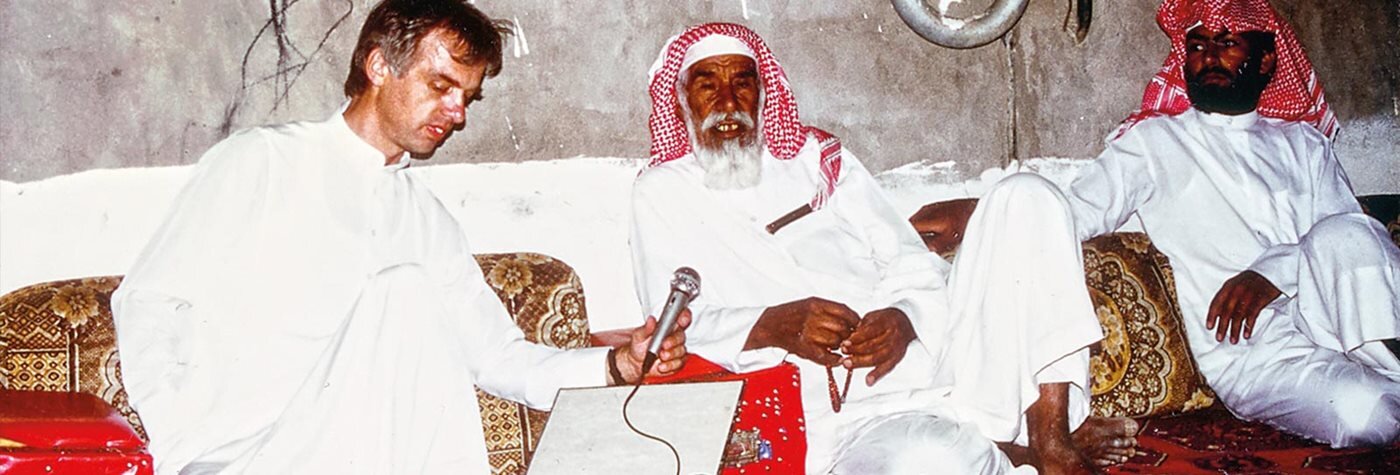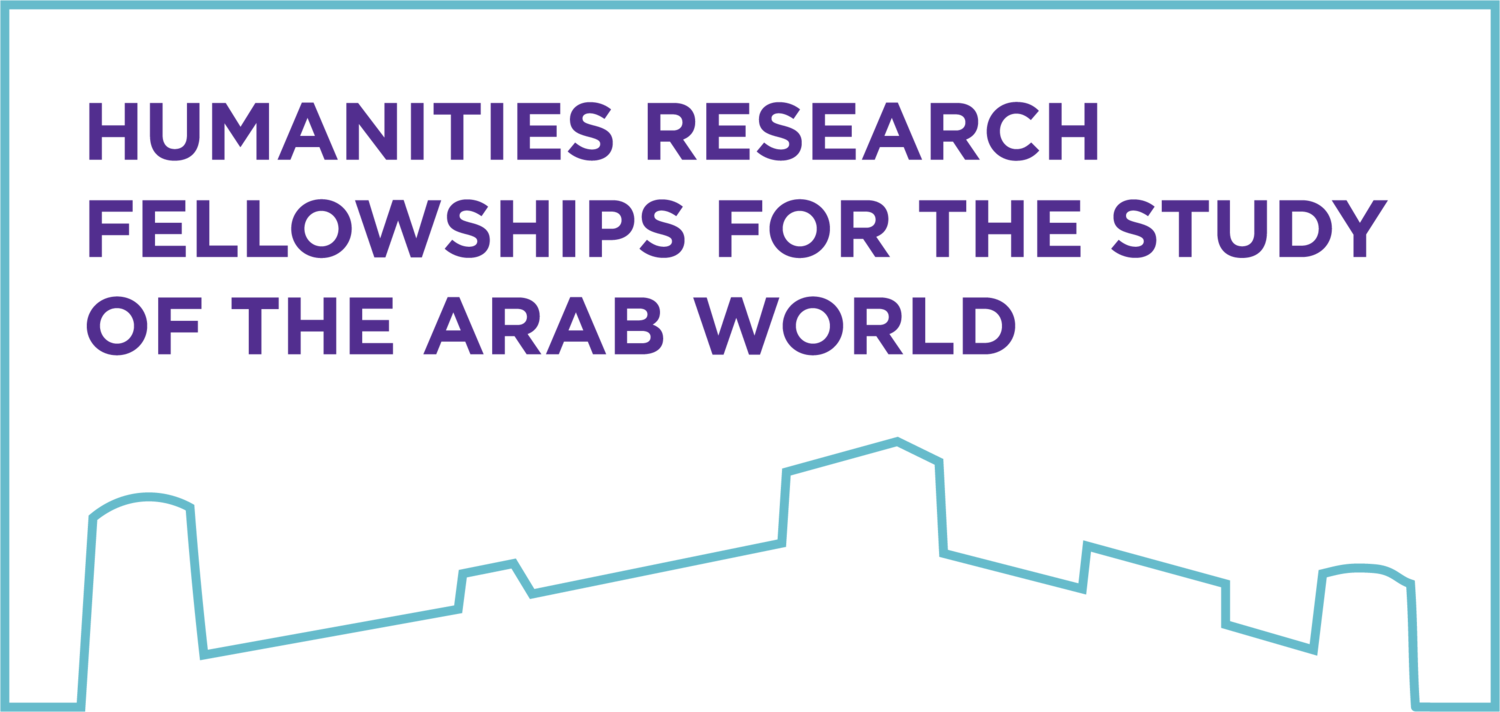
Dictionary of Arabian Poetry and Narratives
-
Project Director
Marcel Kurpershoek
Senior Humanities Research Fellow -
-
Project Description
In a well-known expression, poetry is called the dīwān of the Arabs: the record of individual and collective memory reflecting their lives and circumstances. Among the Bedouin in particular, because of their migratory habits, poetry was composed, transmitted and preserved orally. In settlements literacy was less rare, but there also poetry mainly circulated orally in the majlis gatherings of men and women. From Arab antiquity and its great pre-Islamic odes until recent times, poetry was as much a natural part of social assemblies as in later times was the coffee served to guests. As an art and social convention, it gives expression to the participants’ tastes, values, and experience in life. Its language and images are steeped in the social and natural environment of the days before modernity and which had remained essentially unaltered over the centuries. For example, since time immemorial the movements of the Bedouin were conditioned by the availability of grazing for their animals: the subject of rain and drought was always on their mind.
This tradition of poetry is intimately tied to local conditions and dialects, as well as occupations like camel husbandry, oasis irrigation, handicrafts, raiding, and various customs that in modern times disappeared or have fundamentally changed. Today, much of its language and vocabulary is not readily understood by scholars and students from outside the area, nor by the large majority of today’s younger population of Arabia itself. Often the poetry is embedded in a narrative that tells about the events that inspired the composition: the qiṣṣah wa-qaṣīdah, ‘story-cum-poem,’ the pair that informs the famous Book of Songs (Kitāb al-Aghānī), one of the greatest treasures of Arabic literature compiled more than a thousand years ago. While the Book of Songs, also derived from oral tradition, is a massive work in Classical Arabic, accessible through many dictionaries and other tools, the language of later oral tradition in poetry went through processes of linguistic change that resulted in the different vernaculars of today’s Arab countries.
At the same time, because of its location in the area where Classical Arabic originated and the relative isolation of inner Arabia, the idiom of what is now often known as Nabaṭī poetry shows an astounding resemblance to the very earliest classical Arabian poetry. It also presents vernacular features and vocabulary that is new or changed since the classical days. Over the roughly seven centuries of its known existence, Nabaṭī poetry developed its own artistic conventions and infinitely rich desert vocabulary. The same is true for the narrative tradition.
Hence the need for a dictionary of this type of Arabian (oral) poetry & narratives. In order to firmly establish its links with early poetry in Classical Arabic such a dictionary needs to explain the lexical items with reference to classical equivalents, if any. At a later stage the Arabic, transliterated into Latin characters in order to reflect the dialectal pronunciation, needs to be accompanied by an Arabic (Nabaṭī/vernacular) – Arabic (Modern Standard Arabic) version: this will assist the vocabulary’s understanding by students from the Arabian region itself. If presented in digital online format, this version may attract comments and contributions ‘from the field’ such as were collected from informants on research visits before the pandemic brought this practice to a halt.
Many written sources exist: voluminous Arabic-Arabic dictionaries published in Saudi Arabia and other countries; collections of proverbs and sayings; twitter postings and websites where amateurs engage in lively lexical discussions; explanations given in notes to published traditional poetry; glossaries and books published by scholars in other languages than Arabic; and some in travel accounts by early visiting scholars from Europe. Yet much of this material remains scattered and incomplete. The project will draw on all of these sources and in due course should attract interactive contributions from interested persons who are in the possession of further detail and knowledge. To be successful and make a meaningful difference, the project must be conceived of as a long-term collective effort that engages both regional and international scholars and amateurs. Seen in this context, it is a work of preservation, explanation and reactivation of one of the prime elements of the Arabian region’s heritage and history.
As a first step, new material will be grafted onto a version of Voices from the Desert, the glossary of P. Marcel Kurpershoek’s series Oral Poetry & Narratives from Central Arabia (Brill Publishers, 1994-2005), readied for this purpose with the help of a student assistant. Next, it will be amplified with the vocabulary of a selection from Dr Saad Sowayan’s Days of the Latter Arabs (Ayyām al-ʿArab al-awākhir) as a tool for its translation, provisionally entitled Bedouin Poetry & Narratives from the Great Nafud Desert; a selection of compositions by Bedouin poetesses; works of Nabaṭi poetry published by NYU’s Library of Arabic Literature; and with reference to other published sources, material from internet searches, and communications by WhatsApp with Dr Sowayan and other correspondents in Central Arabia.
Publications
Kurpershoek, Marcel, ed. and tr. Love, Death, Fame. Poetry and Lore from the Emirati Oral Tradition. al-Māyidī ibn Ẓāhir. NYU Press, 2022.
Kurpershoek, Marcel, ed. and tr. Arabian Romantic. Poems on Bedouin Life and Love. ʿAbdallāh ibn Sbayyil. NYU Press, 2018.
Kurpershoek, Marcel, ed. and tr. Arabian Satire. Poetry from 18th Century Najd. Ḥmēdān al-Shwēʿir. NYU Press, 2017.
Kurpershoek, Marcel. Oral Poetry and Narratives from Central Arabia (5 vols). Leiden: Brill, 1994-2005.
